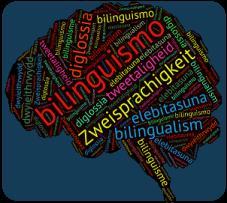Korenar, M., Treffers-Daller, J., & Pliatsikas, C. (2021): Bilingual switching practices have distinct effects on the volumes of the caudate nucleus and the thalamus
To access, click here
Abstract
Bilingualism impacts brain structure, especially in regions involved in language control and processing. However, bilingual experiences are complex and the relation of brain structural changes to key aspects of bilingual language use are thus far poorly understood. Here we used structural MRI and non-linear correlational analysis in Czech-English bilinguals to investigate the effects of habitual code-switching practices on brain structure. We studied the effects of usage frequency of various code-switching types on the volumes of the caudate nucleus and the thalamus, two prominent subcortical structures subserving code-switching. Overall code-switching frequency was measured as well as extent of engagement in various code-switching types. These types were categorised by directionality (L1-L2 or L2-L1) and the level of separation of the two languages. Caudate volumes were positively correlated with overall code-switching frequency, irrespective of code-switching type or directionality, although stronger effects were found for L1-L2 switches. Thalamic volumeswere positively correlated with engagement in forms of CS for which the two languages are kept more separate, with stronger effects observed in L2-L1 switches. This pattern of results underscores the theoretical and methodological importance of using detailed measures of bilingual experiences when investigating the sources of bilingualism-induced neuroplasticity


